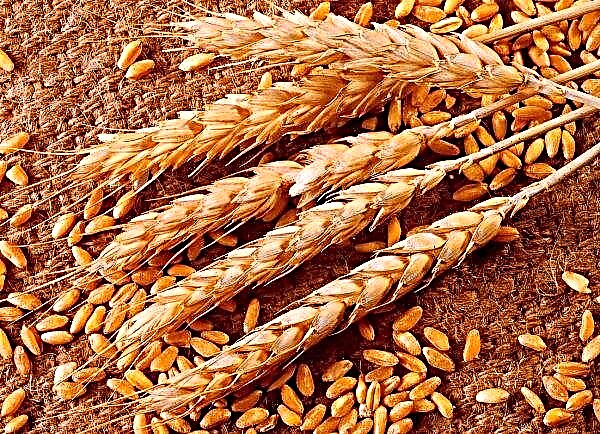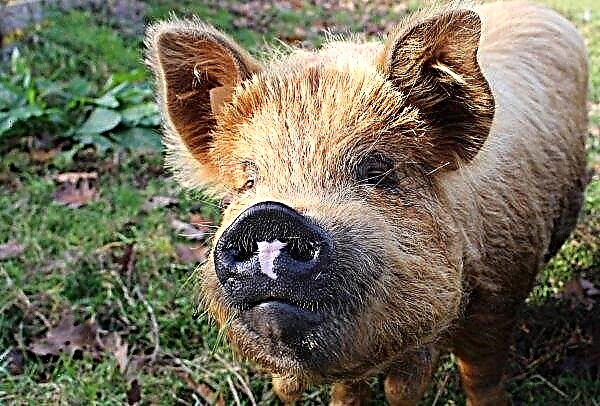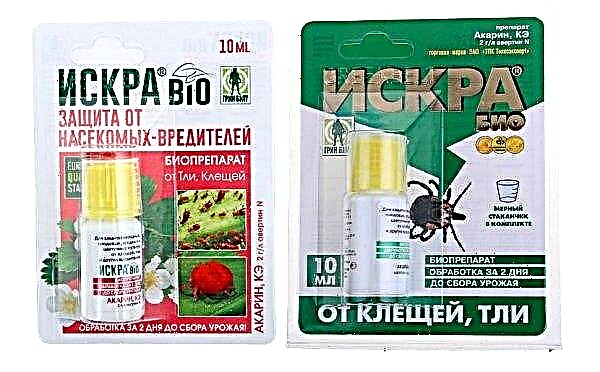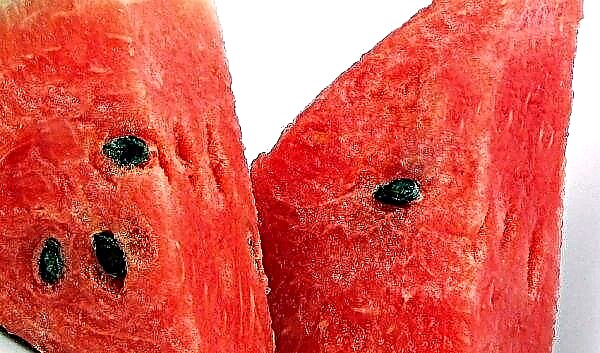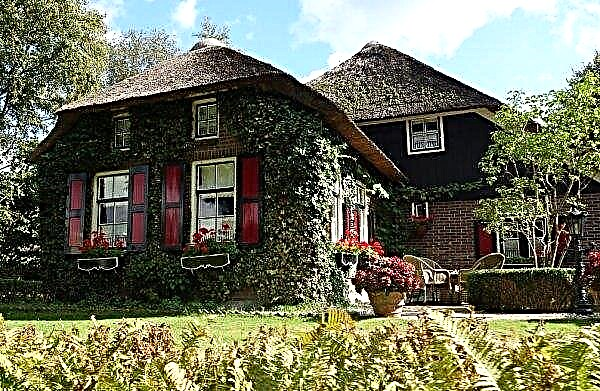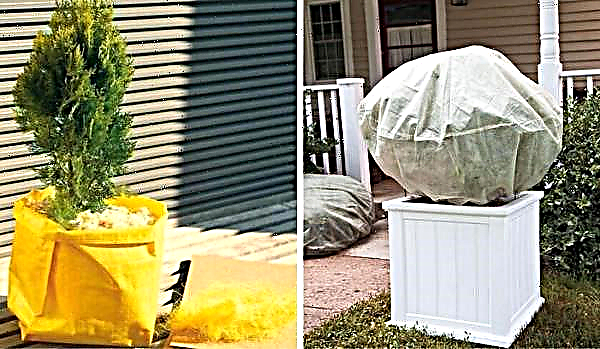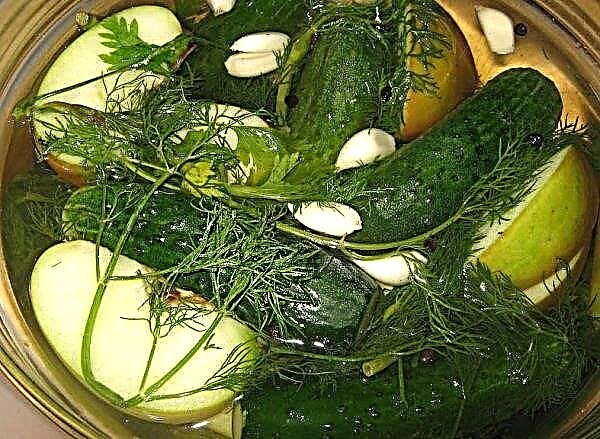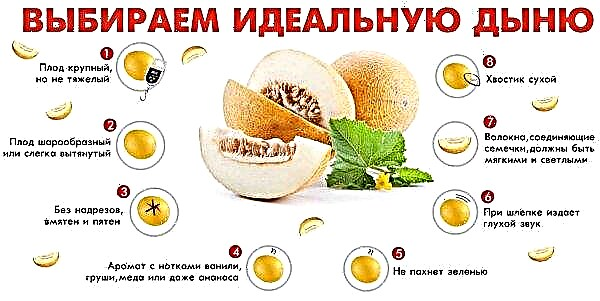Senpolia has been grown at home for over 100 years, and many varieties are now known. Violet "Chic Poppy" is not registered as a variety, but refers to seedlings of breeder K. L. Morev. It is present at exhibitions of international importance, and it is willingly grown by many lovers of these flowers. Consider what should be done for the successful cultivation and propagation of this violet, and what difficulties you may encounter.
Botanical description of the plant
Violet "Chic Poppy" is a senpolia from the Gesneriaceae family. This is an evergreen herb with a very beautiful flowering. The leaves on the petioles are collected in a stunted outlet. In this species of senpolia, the color of the leaf from the center to the edge from green turns to white, and sometimes there are specimens with almost white foliage.
The flowers are very large, up to 6-8 cm, have wavy fringed edges and are located on high peduncles. The first 2-3 flowering heavy flowers fall on the foliage, and in subsequent periods the plant becomes stronger, and this does not happen. In young violets, flowers have pink tones, which over time acquire more saturated brick shades.
Flowering itself is long and plentiful. Flower petals open slowly, like a real poppy. After flowering, like all senpolia, leave box fruits with a large number of small seeds.
Did you know? The natural place of growth for the senpolis is the mountainous terrain of Kenya and Tanzania, with the lion's share located in the mountains of Usambara. Because of this, they are also called Uzambara violets.
Conditions for successful growing at home
Violet "Chic poppy" requires the creation of optimal conditions, otherwise a socket far from ideal will be formed.
Lighting
This flower is demanding on lighting. It must be scattered, as the direct rays of the sun burn the violet. On the southern windows it must be shaded. It feels best on the east or west side, but during solar activity in the summer you will need several hours of shading.
Excess light makes this senpolia wrap the lower leaves, and literally “hug” with the pot. Inadequate lighting makes leaf petioles too long. When organizing optimal lighting, a chic poppy violet forms a beautiful outlet.
If you maintain the optimum temperature in winter and illuminate the violet (up to 11-15 hours), then it will delight with its bloom all year. To uniformly form the rosette, it is recommended that the plant be turned in different directions to the light source, but not during the appearance of peduncles.
Temperature
For a gentle senpolia, the temperature regime must be observed in the range from + 18 ... + 25 ° С, and the most optimal temperature is +20 ... + 24 ° С. When airing, it must be borne in mind that the flower does not tolerate drafts and temperature extremes.
Air humidity
Senpolii need humidity of 50–70%. Violets can be sprayed, but only by fine spraying. It is necessary to make sure that after the water procedure the drops do not collect on the plant and the rays of the sun do not fall.
It is better to place a water container, a room fountain near the flower, or install a flower pot in a tray with wet pebbles. During the heating period, some humidify the air of the room by putting a container of water on or near the battery.
Home Care
The capricious violet "Chic Poppy" requires proper care.
Watering
In no case should the soil near the senpolia dry up, but excessive watering and wet soil should also be avoided. When watering, water should not fall on the aboveground part, otherwise its decay will begin. Violet gently watered along the edges of the pot. The most experienced flower growers use lower watering - they put a pot with a plant in a container of water for up to half an hour, reaching up to 2/3 of the pot.
Important! For violets, the most gentle is wick irrigation, also well suited to plants that are left unattended for a long time. A wick from the cord is inserted into the drainage hole of the pot. Then the plant is located above the tank with water, and the string lowers the water.
Water for irrigation should be settled and room temperature. At high temperatures and during flowering, Chic Poppy needs abundant watering. Periodically, the leaves of the plant should be washed with warm water from dust. After such a procedure, it is recommended that the plant gently get wet with a paper towel and avoid drafts or too active sun.
Top dressing
During the period of active flowering, the “Chic Poppy” violet is fertilized weekly, and when cold weather sets in, if the plant is not artificially lightened and optimal temperatures (+20 ... + 24 ° С) are not created for flowering, they are reduced to 1 time per month.
Top dressing is best done with special liquid fertilizers. A young plant that grows a leaf rosette needs more nitrogen, and an adult senpolia, already able to bloom, requires a higher content of potassium and phosphorus.
Important! If the plant is kept in optimal conditions and proper care is provided for it, top dressing is used, and indoor violet looks depleted, then the acidity of the soil should be checked. With a strong deviation from the norm (6.5–6.8 pH), the flower cannot properly absorb nutrition from the soil, even with regular feeding.
Pruning
At the senpolia, old or diseased leaves, faded peduncles are cut off. Too thickened plants cut side rosettes. With an excess of light, the wrapping leaves of the chic poppy violet are also removed, and the plant is shaded.
Over time, the stem at the bottom of the plant begins to become bare, especially if the plant is rarely replanted. Then in the period between flowering with a sharp blade, the top is cut off, a few woody trunk is trimmed so that it can be taken from the roots. For better rooting, lower leaves are cut from the outlet, which can be used for reproduction. If stalks are found in the plant, then they are also cut. The prepared outlet is placed in water or in a substrate, where it launches roots.
For better rooting, lower leaves are cut from the outlet, which can be used for reproduction. If stalks are found in the plant, then they are also cut. The prepared outlet is placed in water or in a substrate, where it launches roots.
Transplant Rules
Violet "Chic Poppy" should be transplanted 2 times a year. This procedure should occur when the flower is not in the flowering stage. The best time for transplantation is considered the beginning of March and the beginning of October. Sometimes a plant needs an urgent unscheduled transplant - during acidification of the soil, rotting of the roots, if the plant is exhausted by prolonged flowering or slowly grows.
For planting, a pot with a diameter of one third of the size of the outlet is selected. Small and shallow pots are suitable, since the root system of the senpolia is weak, and excess soil will sour. Most of all, the plastic is suitable for the material of the pot making - it will not allow the earth to dry out too quickly. The presence of a drainage hole is mandatory. Drain from expanded clay, pebbles or broken brick with a layer of about 3 cm is poured into the pot.
Senpolias love neutral nutrient soil with good friability and permeability. The optimum acidity is 6.5–6.8 pH. You can buy ready-made soil for violets in the store, or you can make it yourself. For example, mix 5 parts of leafy earth, 3 parts of peat and 1 part of sand. Instead of sand, you can put vermiculite. Add some charcoal and sphagnum to the mixture.Then the soil is disinfected by pouring boiling water on it or calcining in the oven. A mixture of universal soil (5 l) with charcoal (2 tablespoons), vermiculite (1/2 cup) and sphagnum (1 glass) is also suitable. For a day, violet is well watered. If the violet is healthy, then the transplant is carried out by transshipment method. If the roots are rotten, then the diseased parts are cut off, and the soil is completely changed.
A complete replacement of the earth is also done if the plant has not been transplanted for a long time. When transplanting, lower and diseased leaves are removed, in old specimens, the roots are cut to rejuvenate the flower. The overgrown plant is divided into sockets. After transplanting, the plant is watered only after 2-3 days, but the planting itself should be carried out in moistened soil. The violet can be covered with a jar to maintain high humidity and good survival.
Did you know? This plant was opened to Europe by the German commandant in the African colony W. Saint-Paul. During his walks in 1892, he collected seeds from a flower he liked and sent to his father in Germany. He handed them over to the familiar botanist G. Wendland, who grew an adult plant from seeds, and called the new, previously unknown kind of flowers, called Saintpaulia violet in honor of the Saint-Paul family.
How to propagate
Propagation of violet "Chic Poppy" is recommended leafy cuttings and children. This senpolia gives many daughter sockets, and its leaves easily take root. Reproduction using rosettes is usually carried out during a flower transplant. When the violet grows and the pot becomes cramped, it needs a transplant and separation of sockets. In this case, it is necessary to carefully remove the flower from the pot and separate the stepsons along with part of the root system. They are then planted in separate pots. A good and healthy plant tolerates transplant normally.
In this case, it is necessary to carefully remove the flower from the pot and separate the stepsons along with part of the root system. They are then planted in separate pots. A good and healthy plant tolerates transplant normally.
Another, easiest way, is to propagate using leaves. To do this, absolutely healthy leaves are carefully separated from the bottom of the violet. The petiole should be at least 1.5 cm long. The leaf is placed in standing water.
As soon as the stalk takes root, it can be planted in a small pot with prepared soil for violets and drainage. Then, from above, the container is covered with a plastic bag and transferred to a warm room with good lighting.
Every day the package is removed for ventilation for 10-15 minutes and moisten the soil as needed. A leaf can sit for a long time in the ground and not develop, and sometimes even completely wither. Here you need to be patient and wait. After the first leaves appear, the main sheet is cut off, but only if it does not wither. A healthy leaf can be used again for propagation. During the rooting period, planting material must be provided with optimal lighting.
Possible growing difficulties
With the contents of the "Chic Poppy" violet, you may encounter some difficulties. The plant may become ill. Infection often occurs through uninfected soil, from neighboring indoor flowers. Some diseases may occur due to violations of the conditions of detention.
The most common diseases are as follows:
- Powdery Mildew This fungal disease manifests itself in the form of a white coating on the leaves. This phenomenon often causes excessive humidity with a reduced temperature. To eliminate the problem, such chemicals as Saprol, Baytleton, Topaz are used. Sulfur powder helps to sprinkle the plant and cover it with a bag of polyethylene.

- Late blight. This disease affects the stems and roots. When it appears, the flower begins to acquire a brown color, lose leaves. When identifying this disease, it is necessary to excavate a houseplant, examine and remove damaged sections of the root system. If the flower is badly damaged, then it is better to dispose of it, leaving the stalk for propagation. It’s good to use chemical preparations like “Fitosporin-M”, “Alirin-B”.

- Fusarium Often occurs if the flower is planted in an oversized pot, as well as when the temperature drops and watering with cold water. This fungal disease affects leaves and roots - they begin to rot, the leaves, acquiring a brown color, begin to fall away. In this case, all affected areas are removed and fungicides are used (Fundazol, Vitaros).

- Gray rot. It is detected in the form of a grayish coating on the plant. Infection often occurs through the soil or from other flowers in the vicinity. Affected areas are removed and treated with fungicide (“Fundazole”).
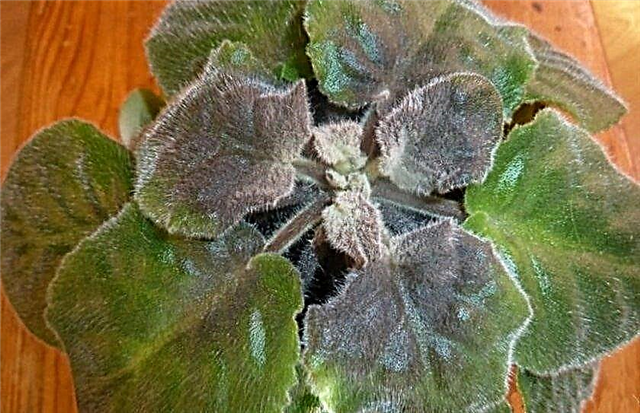
- Rust. With such a fungal disease, a rusty coating appears on the leaves.
 Excessive humidity and fever in the room can provoke the disease. To combat it, fungicides are used (Bactofit, Vectra).
Excessive humidity and fever in the room can provoke the disease. To combat it, fungicides are used (Bactofit, Vectra).
Important! It should be noted that yellowing of the foliage is not only due to the appearance of diseases and pests. This happens if the violet does not have enough light, it is in a draft, as well as from burns due to direct sunlight. The reason for this phenomenon can also be improperly selected soil.
These delicate indoor flowers may be susceptible to the following pests:
- Spider mite. When this pest is damaged, the leaves turn yellow, white blotches can be noticed on them, and flower growth slows down, you can also notice a thin cobweb. In this case, the plant is cleaned with a soap solution and chemical preparations are used (Actellik, Fitoverm). Spraying is performed 2-3 times with an interval of 7-9 days.
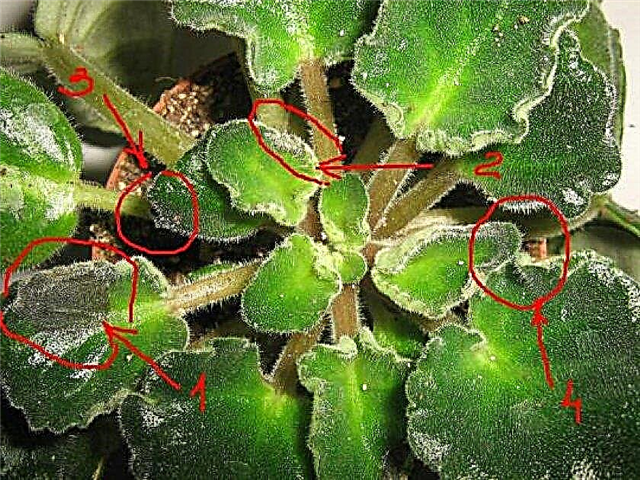
- Thrips. Amazed by flowers and their anthers. Buds lose their aesthetic appearance, pollen crumbles. In this case, spraying with the Aktellik preparation is performed at least 3 times with an interval of 7 days, and then the Aktara insecticide is irrigated. All buds must be cut off within 60 days to prevent the violet from blooming.
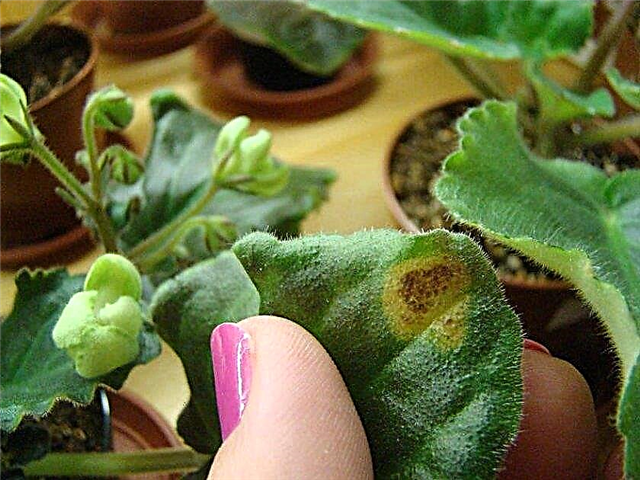
- Mealybug. You can notice its appearance by cotton-like plaque on the leaves and roots. These pests feed on plant sap. In this case, the plant is cleaned with a soap solution, and then the “Aktara” insecticide is used. It is imperative to completely replace the soil.

- Nematodes. These insects infect the leaves and root system. It is very difficult to get rid of them, it is best to take preventive measures to prevent the disease. In this case, the plant is best disposed of so as not to infect neighboring flowers.

To prevent the appearance of certain pests and diseases, it is necessary to disinfect the soil when planting or transplanting a plant. To prevent fungal diseases, a flower is sprayed with Confidor once a month in the cold period.
Preventive treatments are also carried out by Fitoverm, Aktellik, Aktaru. To increase the resistance of the plant to diseases and the negative impact of the external environment, “Immunocytophyte” spraying is also used. Subject to all the rules of keeping violet "Chic Poppy" will delight you with its luxurious and long flowering.





 Excessive humidity and fever in the room can provoke the disease. To combat it, fungicides are used (Bactofit, Vectra).
Excessive humidity and fever in the room can provoke the disease. To combat it, fungicides are used (Bactofit, Vectra).




